Imagine a running shoe that redefines the boundaries of human endurance, shatters records, and ignites a global debate on the role of technology in sports. Welcome to the world of the Nike Vaporfly, a game-changing innovation that reshaped the running community after its introduction in 2017.
A groundbreaking running shoe, designed to maximise efficiency and minimise energy loss, it not only transformed the way athletes train and compete but has also spurred the development of an entirely new generation of performance-enhancing footwear.
In this article, we take a deep dive into the history of Nike Vaporfly, the shoe that changed the running world. From its ambitious beginnings in Project Breaking2, via the early prototypes that set the stage for a revolution in distance running, to the new version–the Vaporfly Next% 3–coming out these days
Project Breaking2: The Birth of a Dream
In 2014, Nike embarked on a bold mission: to help a runner break the elusive two-hour barrier in the marathon, a feat once considered impossible. Dubbed Project Breaking2, this ambitious initiative laid the groundwork for the Vaporfly’s inception, as Nike sought to create a running shoe that could push the limits of human performance.
Assembling a team of scientists, engineers, and designers, the company began an extensive research and development process that aimed to unlock the secrets of optimal running efficiency and biomechanics.
Early Prototypes and Development – Crafting the Ultimate Running Shoe
Between 2015 and 2016, the Vaporfly underwent multiple iterations, as Nike experimented with advanced materials and technologies to create the perfect balance between cushioning, energy return, and weight. Two key innovations emerged during this period: the incorporation of a carbon-fibre plate in the midsole and the development of ZoomX, a lightweight and highly responsive foam.
The carbon-fibre plate, a result of rigorous testing and experimentation, provided unparalleled propulsion and energy return, acting as a springboard that helped runners maintain their pace with minimal effort. Meanwhile, ZoomX foam offered superior cushioning and responsiveness in combination with low weight. This unique combination allowed Nike to create a long distance racing shoe that provided far more cushioning and energy return than the reigning style of minimalist racing shoes.
As these innovations coalesced, the stage was set for the Vaporfly to make its grand entrance onto the world stage, forever altering the landscape of distance running.
The “Hidden” Launch and its Impact on the 2016 Olympic Games
As Nike fine-tuned the Vaporfly’s design, the company quietly provided early prototypes to a select group of elite runners for testing and feedback. In a controversial move, the prototypes were “disguised” by using the upper design of one of Nike’s publicly available racing shoes at the time, making them difficult to distinguish from other models. Some of these runners wore the yet-to-be-released shoes in major competitions.
After placing 4th in the 2016 US Olympic marathon trials, Kara Goucher received considerate coverage and the label of being the “first person to miss out on the Olympics for wearing the wrong shoes”. Goucher called foul play after realising that athletes that placed ahead of her in the race were wearing an unreleased prototype of what would become the Vaporfly, drawing a parallel between chemical and mechanical aid.
The influence of the Vaporfly prototype extended to the 2016 Olympic marathon itself, where all three runners on the men’s podium—Eliud Kipchoge, Feyisa Lilesa, and Galen Rupp— wore the disguised shoes. While at first glance they looked similar to the at the time publicly available Zoom Streak 6, a closer comparison revealed obvious differences.
This extraordinary feat further fueled rumours about the “magic shoes” and their potential impact on the sport. As the running world eagerly awaited the Vaporfly’s official launch, the stage was set for a heated debate about fairness, technology, and the future of distance running.
The Launch of the Vaporfly 4% and its Meteoric Rise
In 2017, Nike finally unveiled the Vaporfly to the public, launching the shoe as the Nike Zoom Vaporfly 4%. The “4%” in the name was derived from lab tests that showed the shoe improved running economy by an average of 4% compared to other popular marathon racing shoes. This remarkable improvement in efficiency quickly captured the attention of runners around the world, as the prospect of shaving valuable seconds off their personal bests proved irresistible.
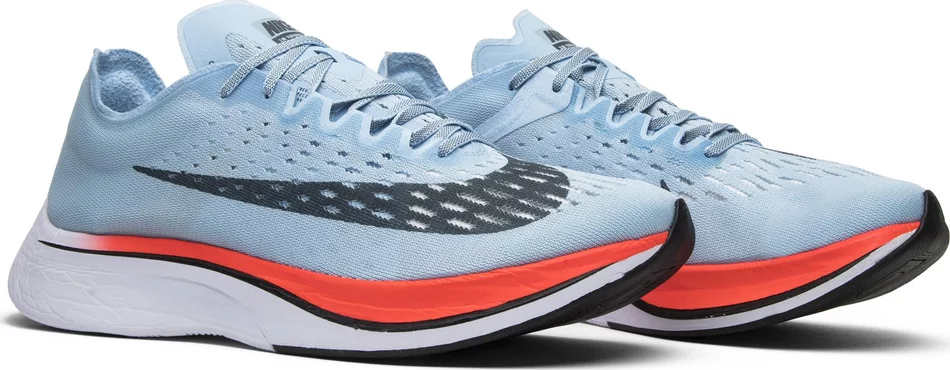
The Vaporfly 4%’s impact on the sport was immediate and profound. Elite runners wearing the shoe started breaking records, and athletes at all levels clamoured to get their hands on a pair. As more and more runners experienced the Vaporfly’s performance-enhancing benefits, the shoe’s popularity soared, and it became the footwear of choice for serious distance runners at all levels.
Restricted Availability
Getting hold of a pair of these magic shoes, however, was easier said than done. Citing production constraints, Nike made the shoes available to the general public only in severely limited quantities. Scheduled to run my first marathon in 2018, I was desperate to get my hands on a pair of Vaporfly. Months after putting my name on the waiting list with the–at the time–exclusive retailer in my country, I finally got the call. They had one pair half a size up from my regular 9 available. If I wanted it, I had to come and collect it within the hour.
The rest, as they say, is history. If you’re wondering what I thought of the shoes back then, check out my Nike Vaporfly 4% review.
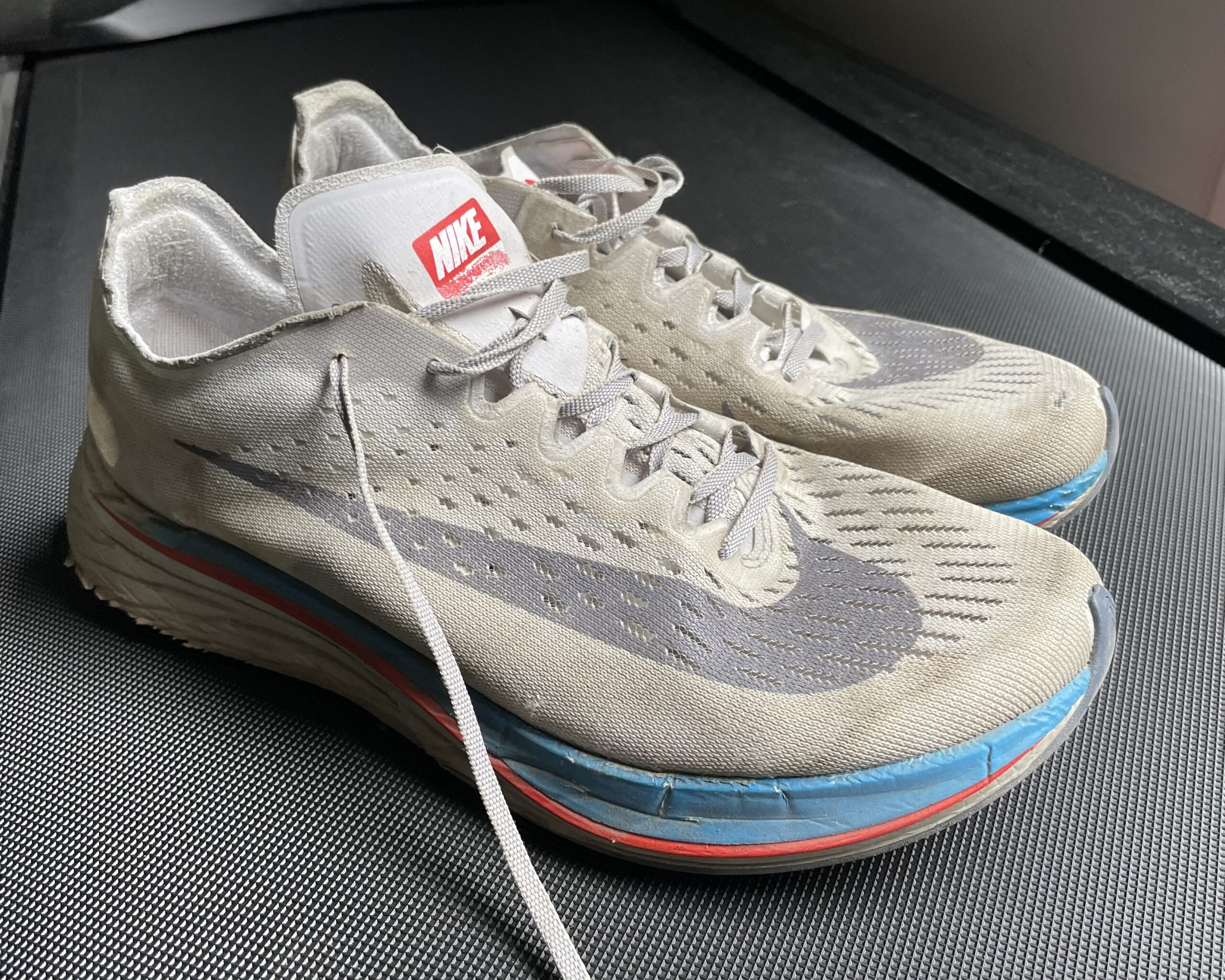
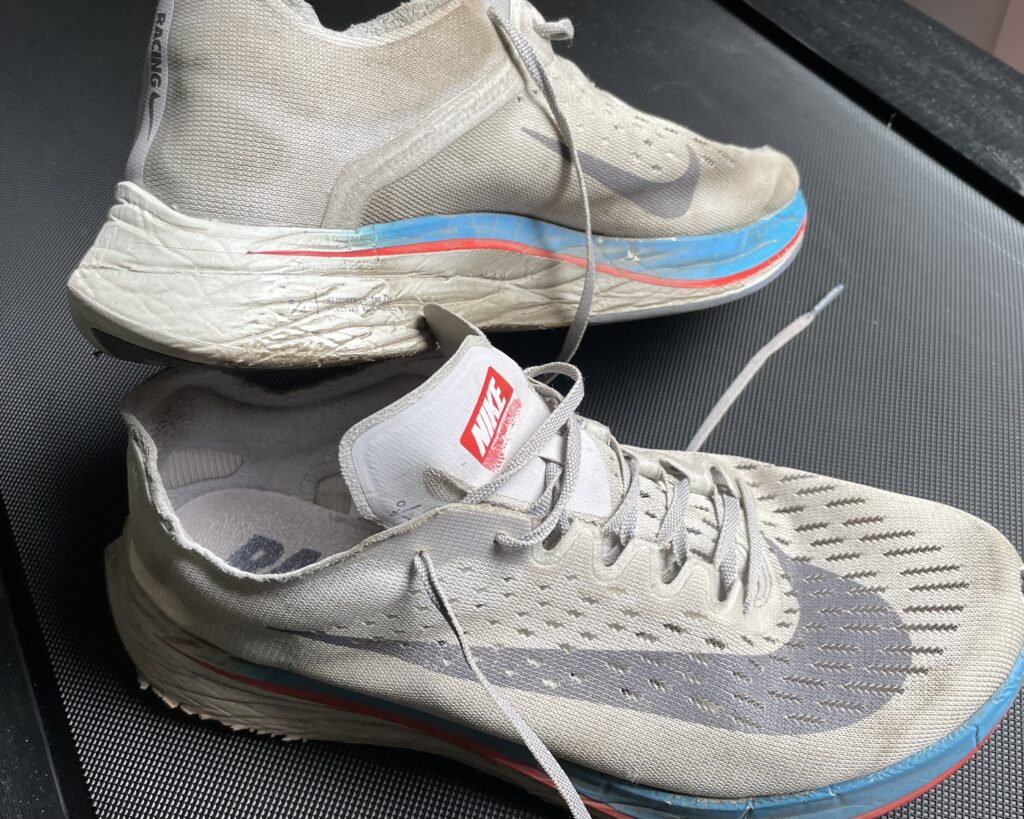
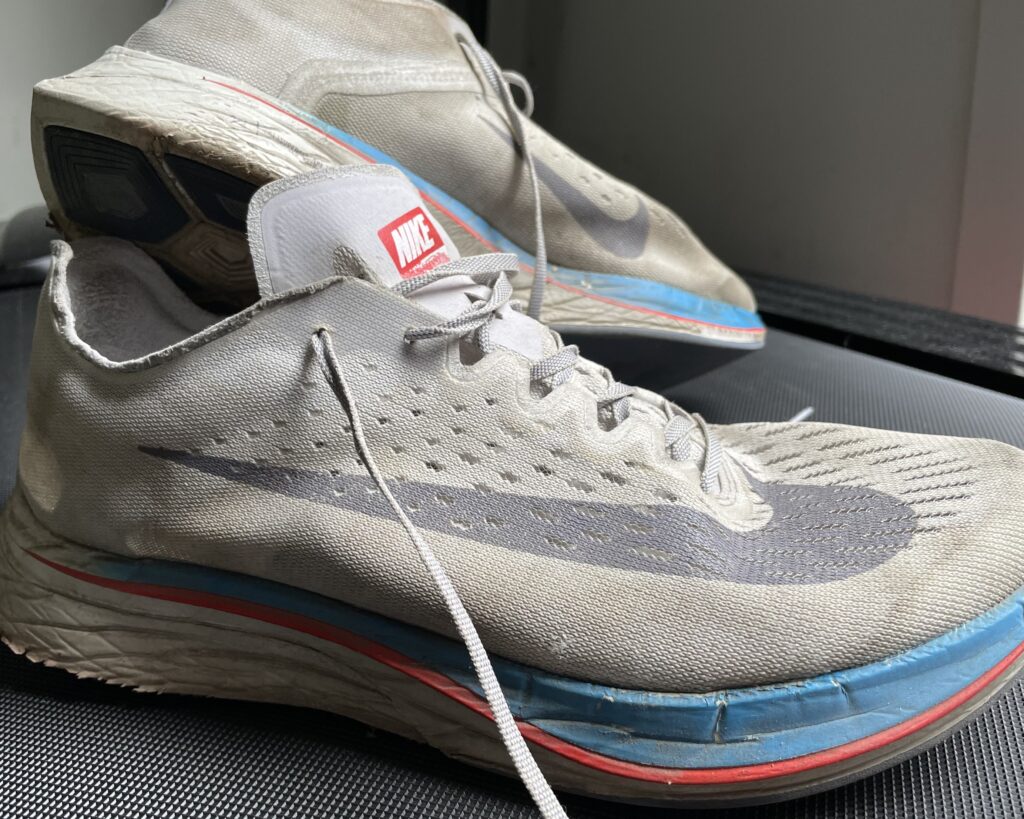
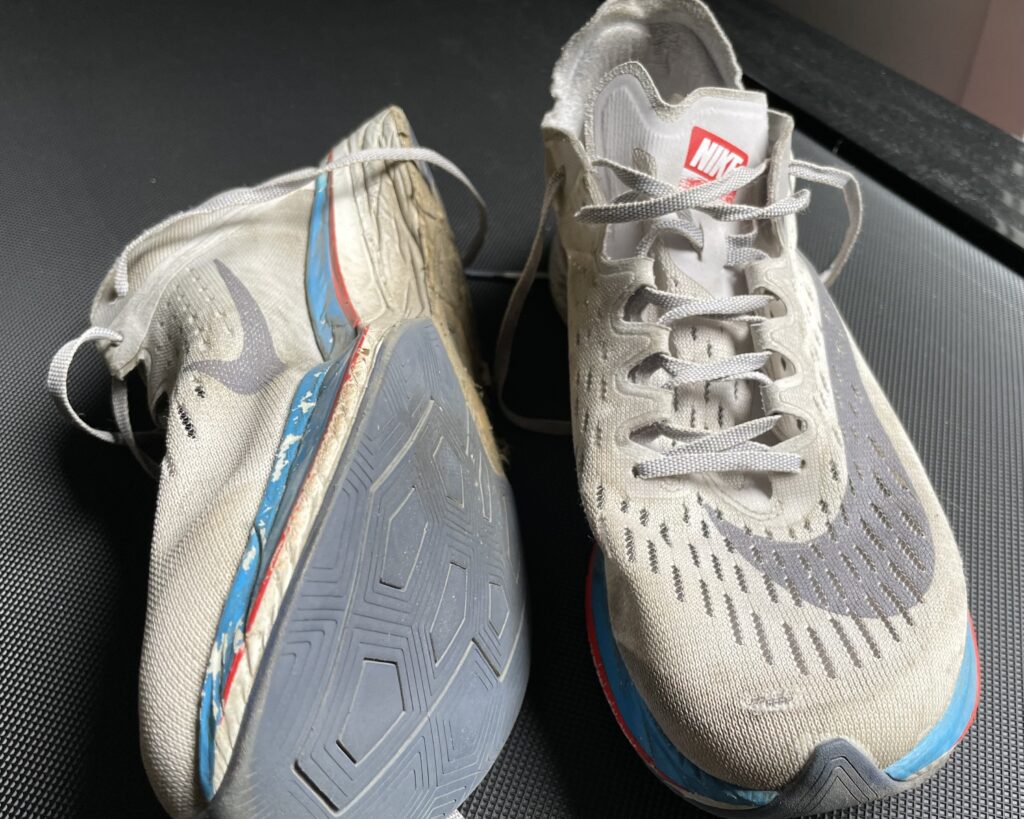
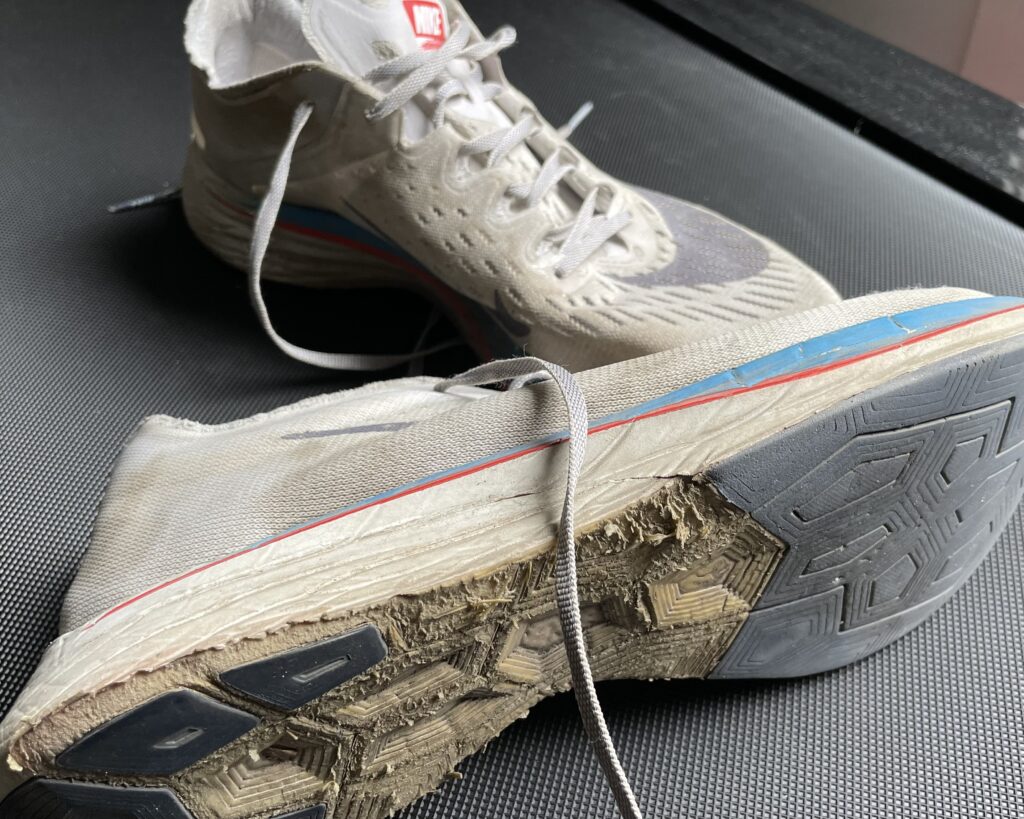
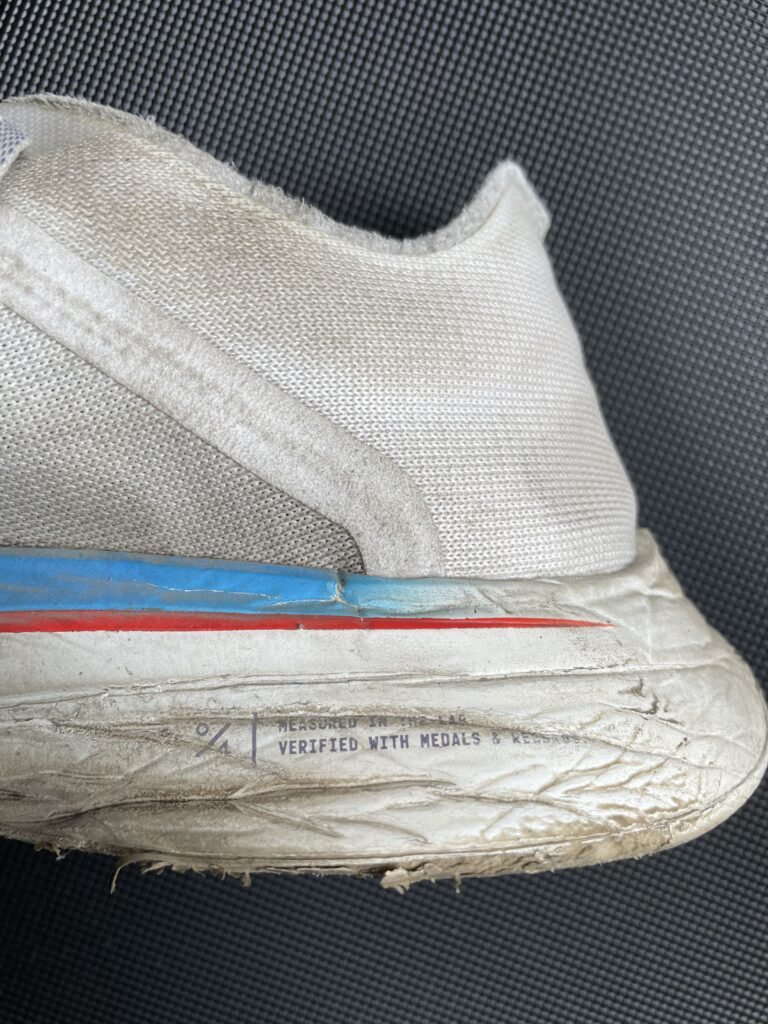
However, with its meteoric rise came questions and concerns about the shoe’s fairness and its effect on the spirit of competition. The Vaporfly’s dominance would soon lead to a global debate about the role of technology in sports and the establishment of new regulations to govern the design of future running shoes.
Controversy and Debate: The Vaporfly’s Polarising Effect on the Sport
As the Vaporfly continued to make waves in the world of distance running, its performance-enhancing capabilities became a topic of intense debate. Critics argued that the shoe’s technology provided an unfair advantage to runners who wore them, effectively skewing race results and undermining the spirit of fair competition. Others saw the Vaporfly as a testament to human innovation, a tool that allowed athletes to push the boundaries of their physical limits and achieve new heights in the sport.
With Nike’s stronghold on the market, competitors struggled to catch up. Meanwhile, runners with financial support from other brands found themselves in a pinch. Do I honour my contract, and race with a handicap wearing inferior footwear? And if I want to compete on a level playing field, can I even get a hold of a pair of Vaporfly?
Vaporfly 4% Flyknit
Meanwhile, in the fall of 2018, Nike released an updated version of the Vaporfly 4%. Featuring a “Flyknit” upper with a sock-like fit, the initial release came in a bright orange colourway.
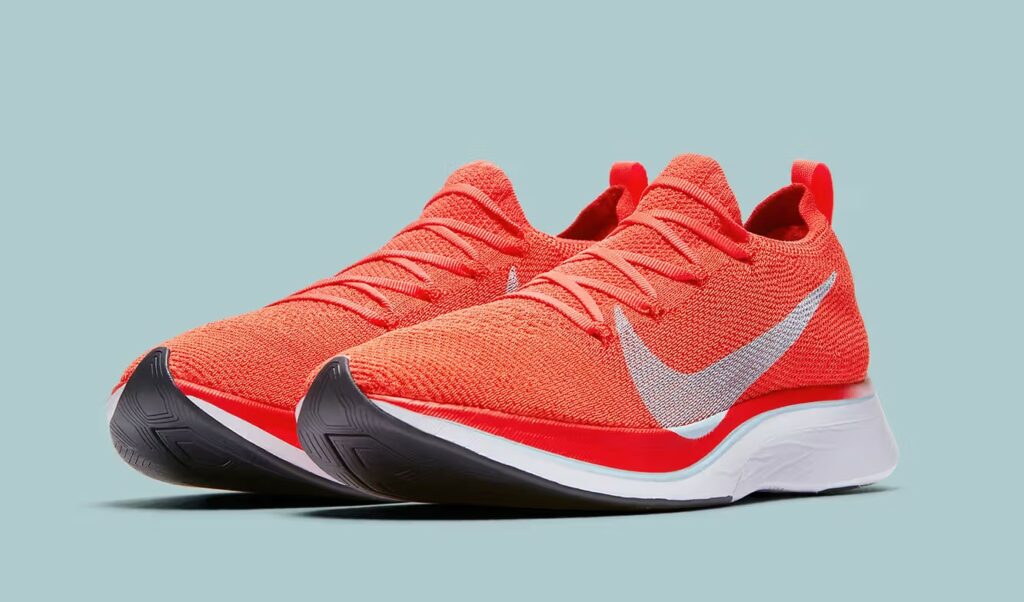
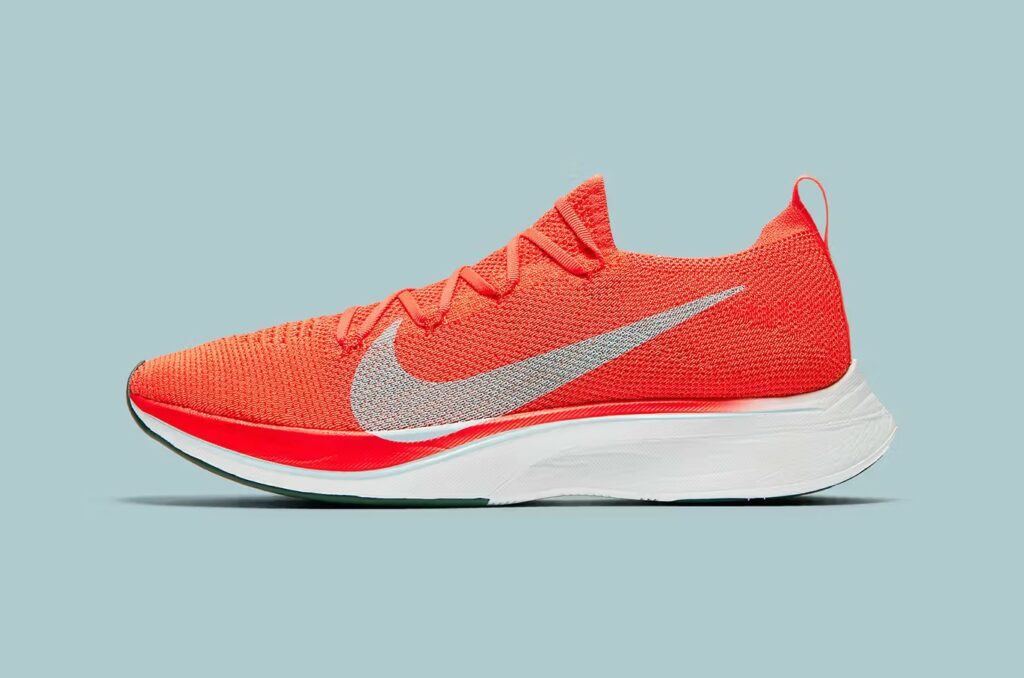
Availability remained limited, and the Vaporfly craze reached new heights as runners wore down the F5 buttons on their keyboards on release day in an attempt to secure a pair. Again, I was able to snag a pair. But alas, on account of an injury, I never even got to use them before their successor hit the market.
Vaporfly Next%
Because as soon as spring of 2019, Nike released the next iteration of the world’s best running shoe. Rumours swirled about the “5%” that would make the shoes even better. But Nike abstained from making specific claims with the naming, and went with “Next%” instead. •••Little did anyone know at the time that this would be the start of a confusing naming convention that would vex runners, as well as Nike’s own marketing department for years to come.
This version of the Vaporfly featured another new upper, branded “Vaporweave”. It tackled the Vaporfly’s metaphorical Achilles heel: rain. With a newer and more lightweight upper, and a reduced drop this was branded as another evolution of the greatest running shoe of all time.
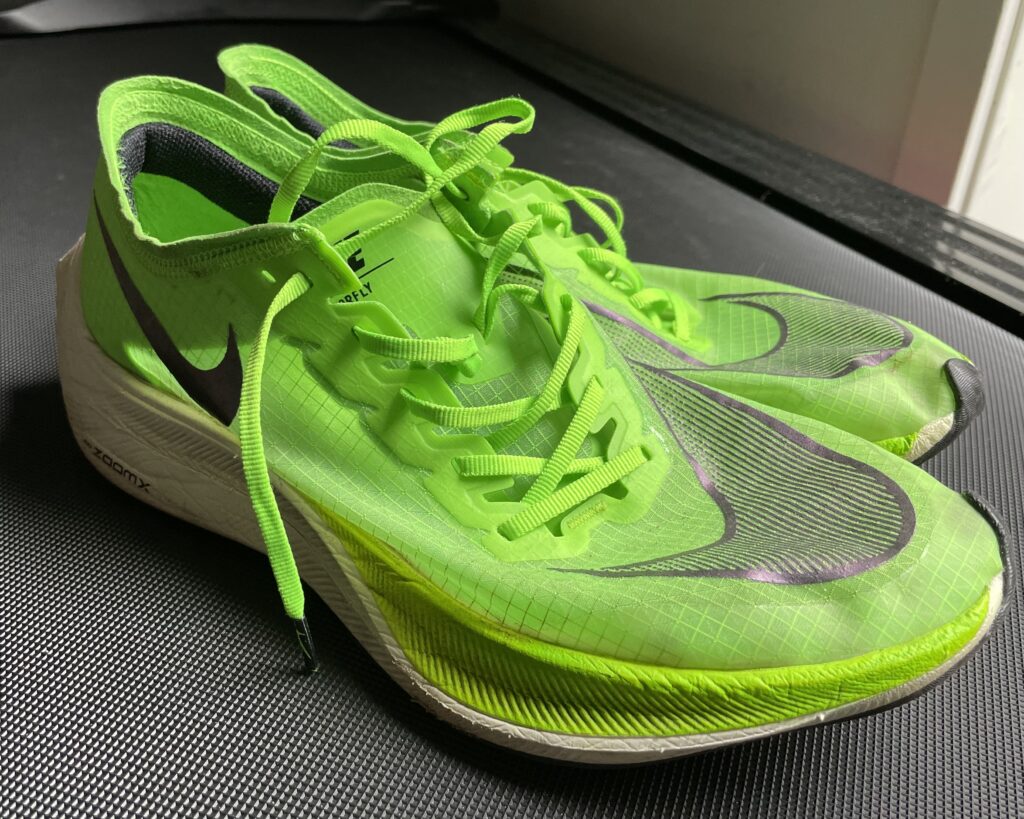
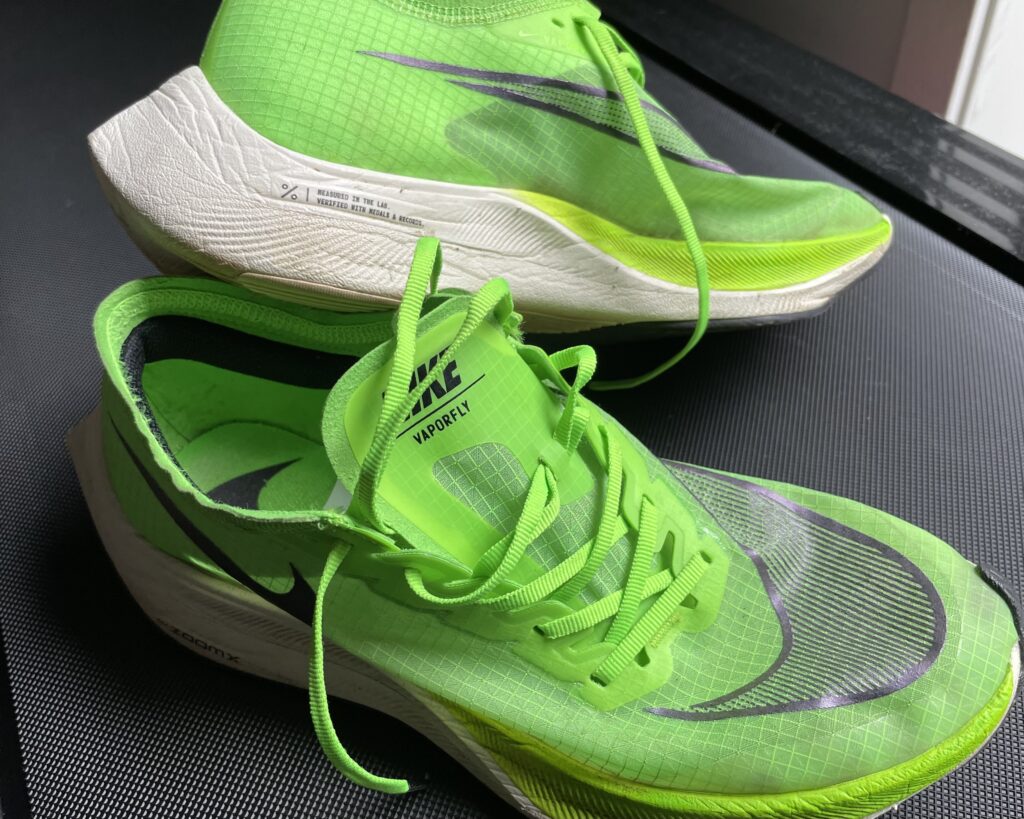
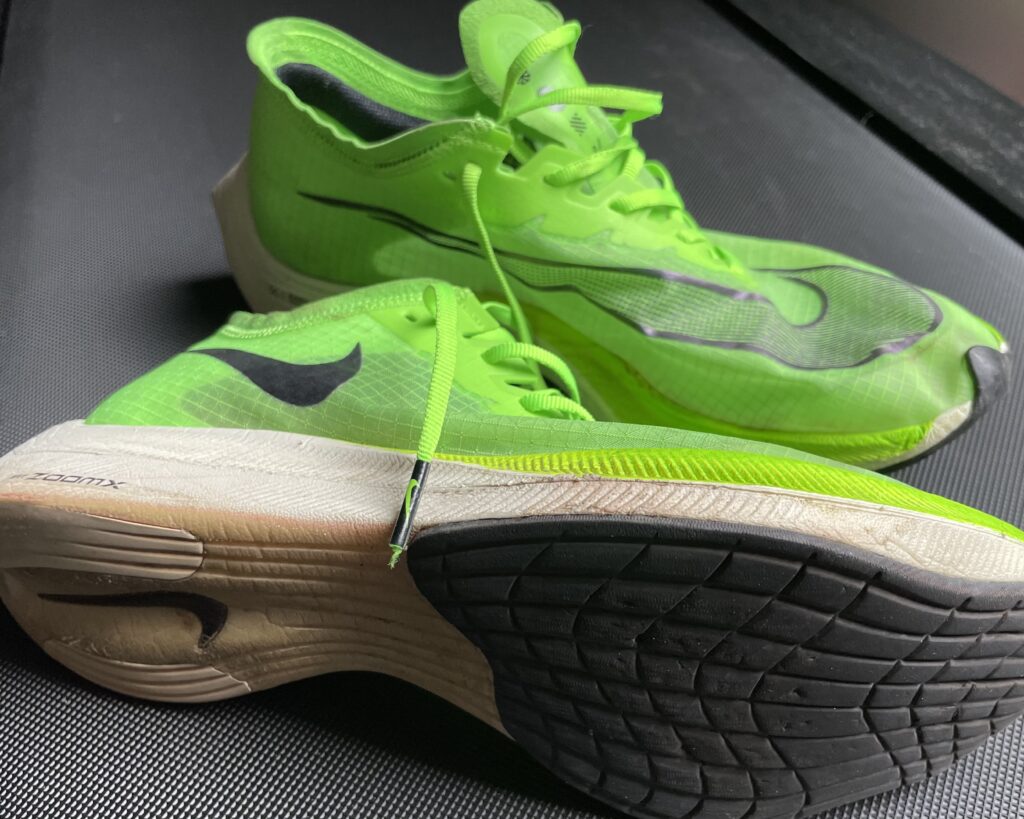
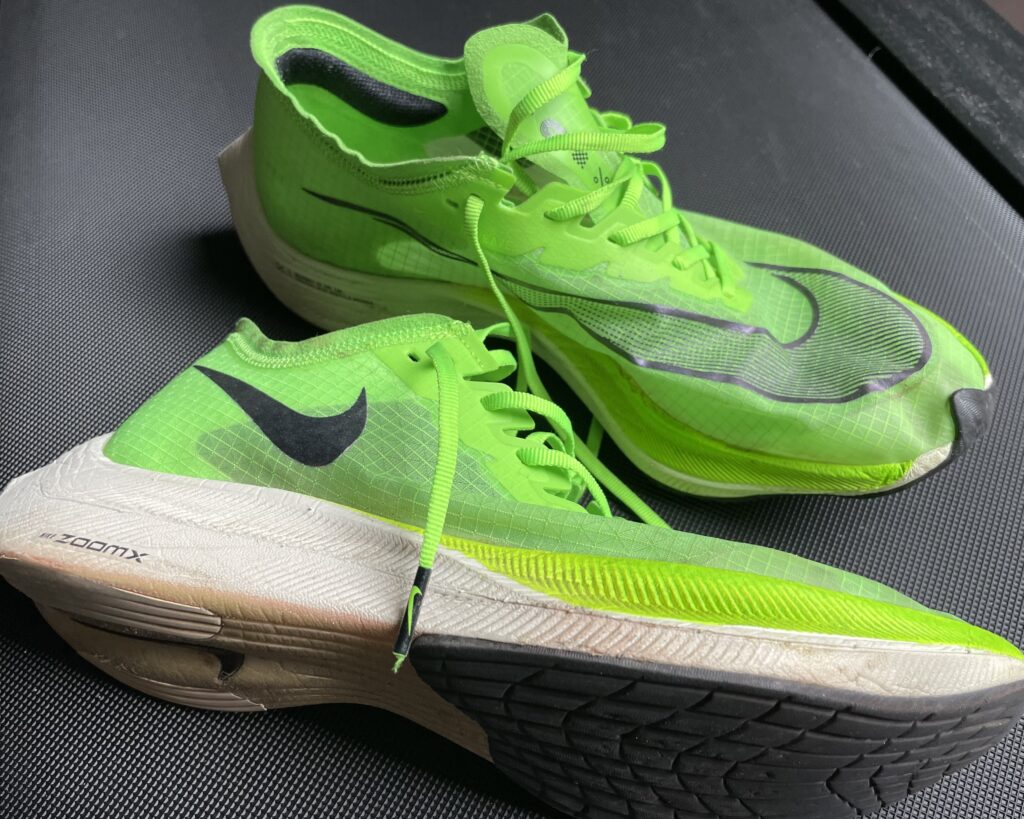
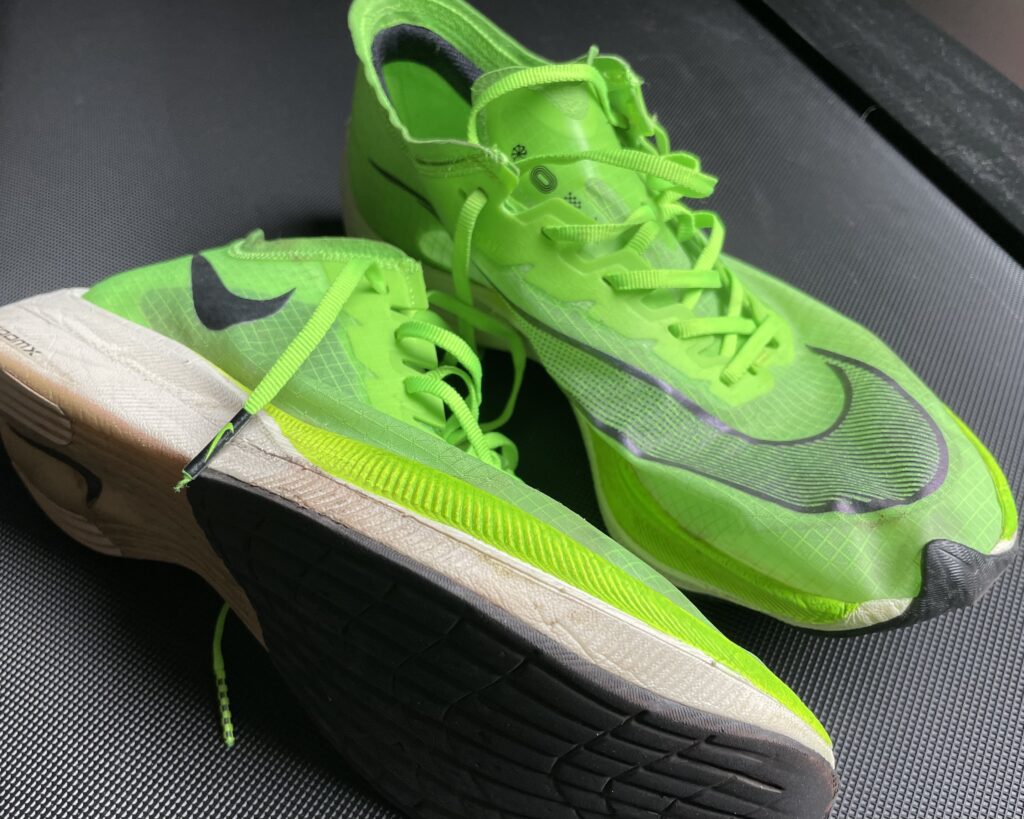
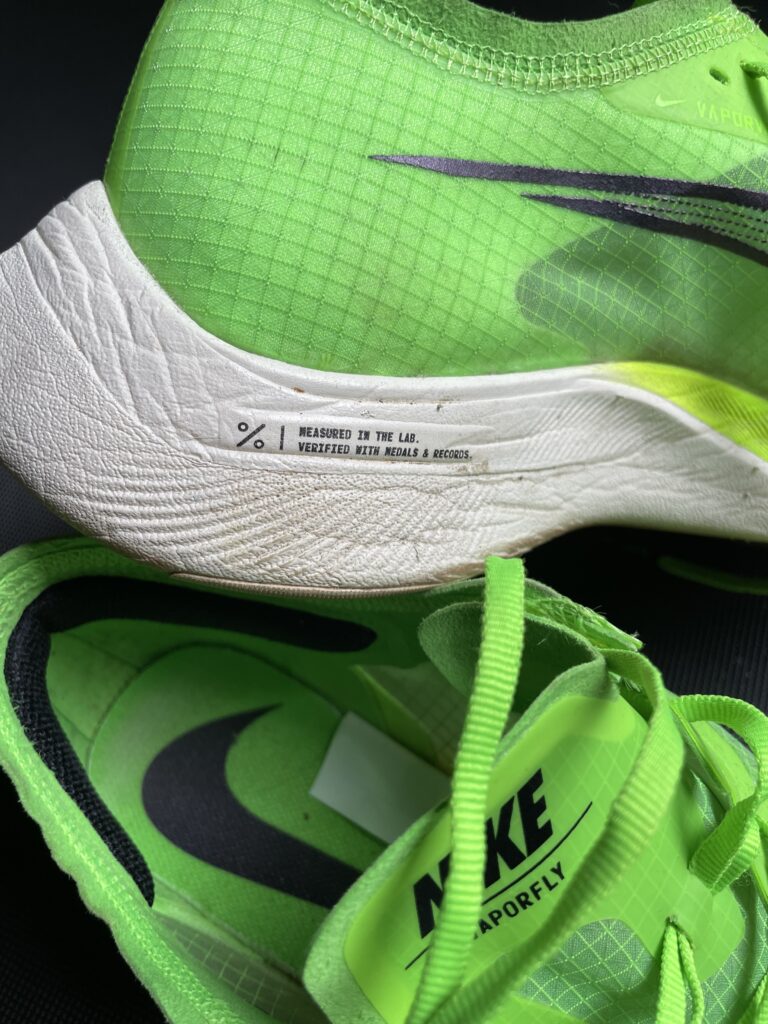
I wore them when running both the Berlin Marathon, and a year later when I set my current personal best. Safe to say I remember this shoe fondly. So much, in fact, that I took the step to secure an extra pair when Nike made it possible to customise the it to your own liking.
Vaporfly Next% “By You”
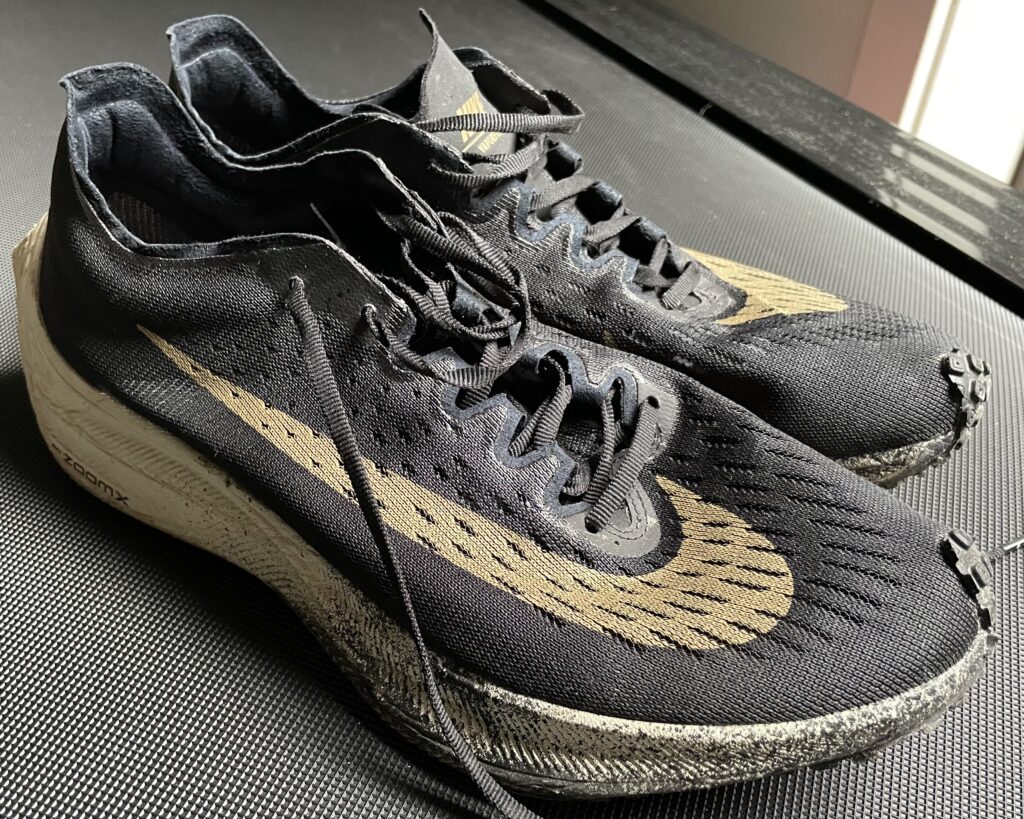
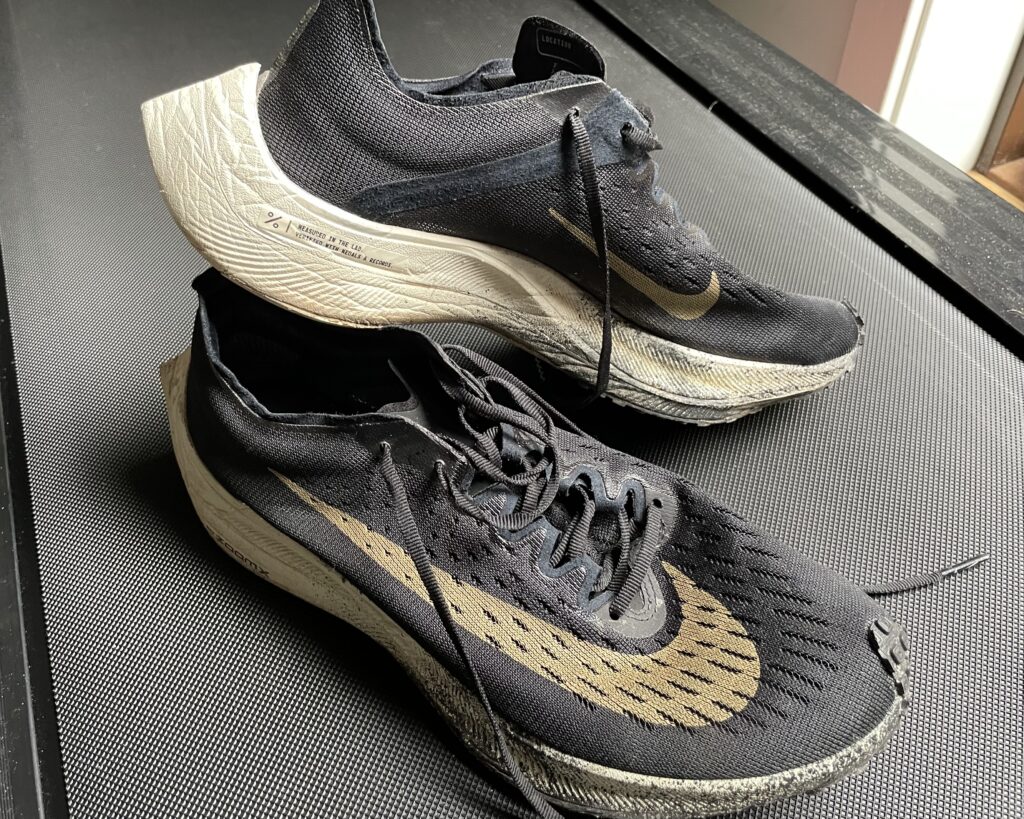
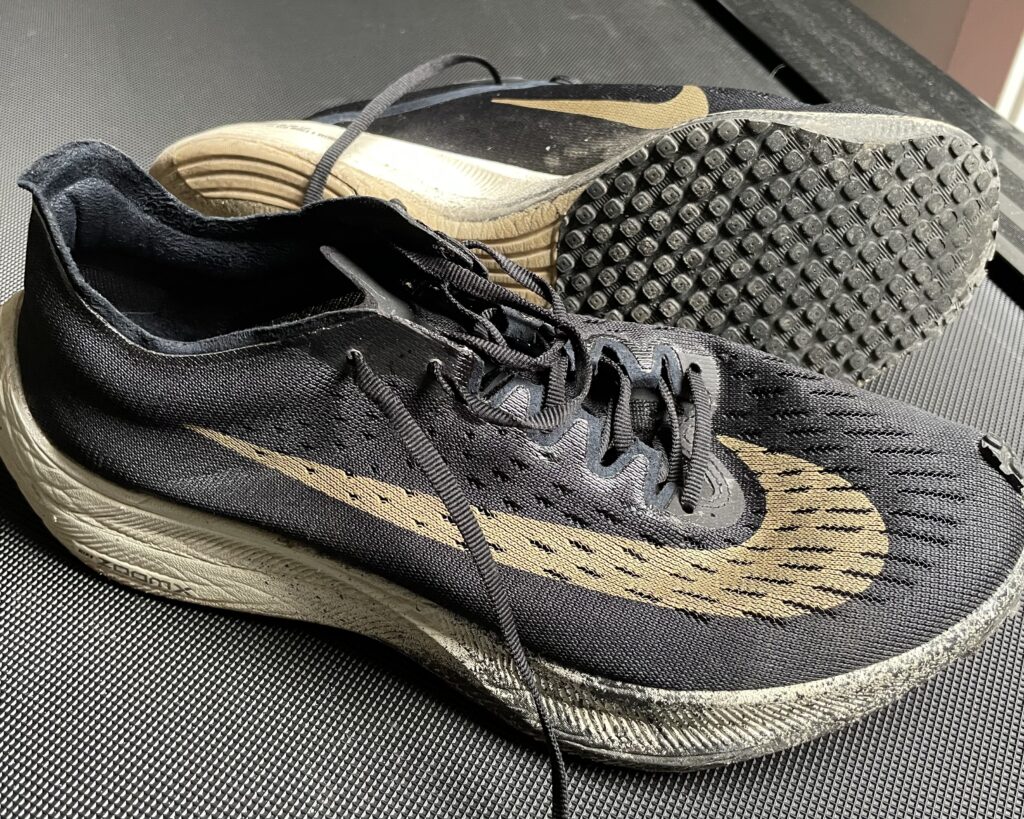
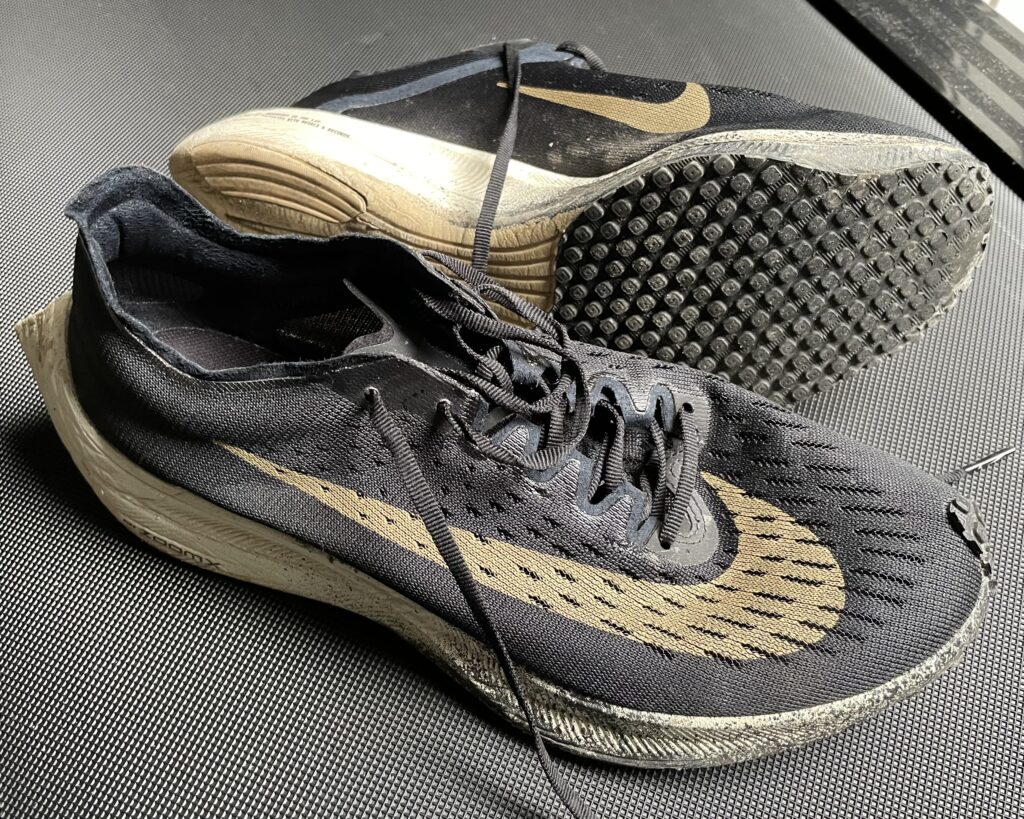
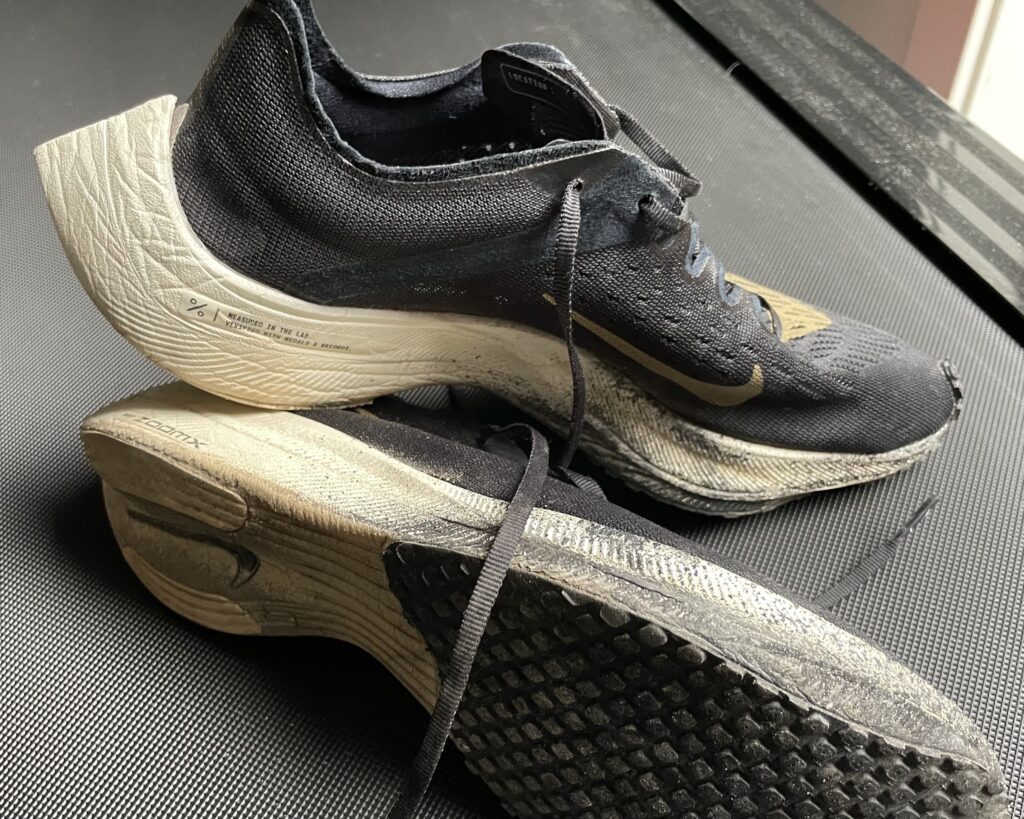
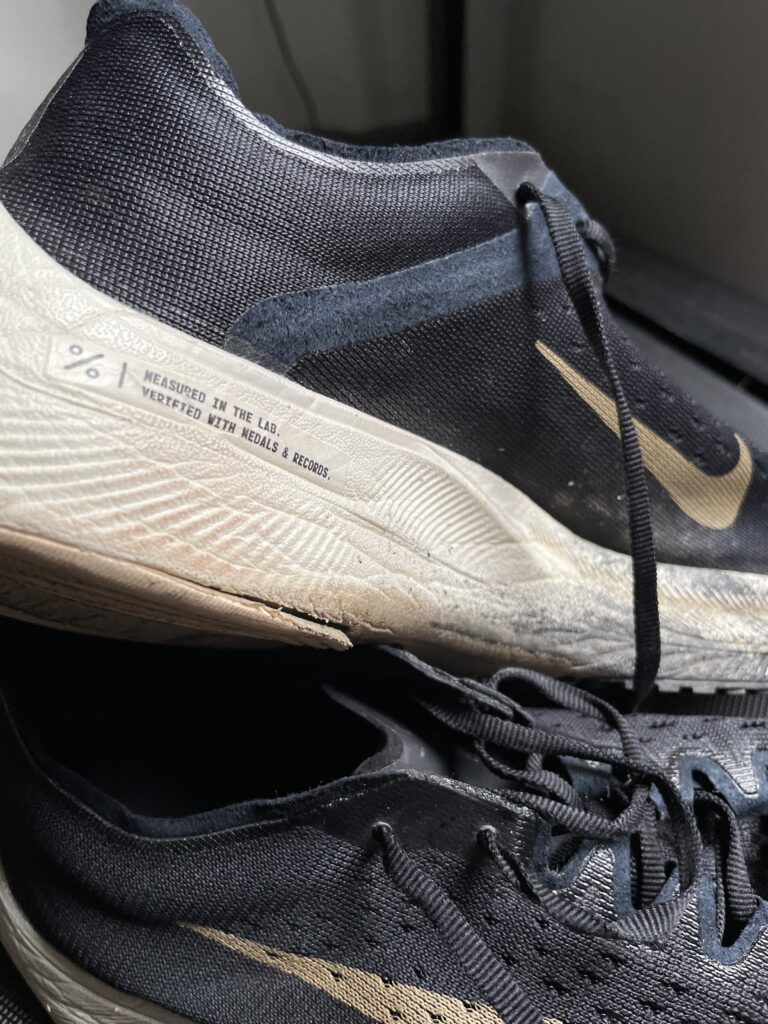
Here, I opted to switch out the upper for the one that featured on the original Vaporfly 4%. To me, it marks the peak of the Vaporfly as a racing shoe.
On the world stage, controversy reached its peak as more world records fell to runners wearing the Vaporfly, prompting calls for the sport’s governing body to step in and address the issue. The running community found itself divided, grappling with questions about the role of technology in sports and the very essence of what it means to compete.
The World Athletics Ruling – Setting Boundaries for Shoe Technology
In response to the growing concerns about the Vaporfly’s impact on the sport, World Athletics acted swiftly. The governing body for track and field conducted a review of shoe technology in early 2020. The outcom? A set of new regulations that aimed to strike a balance between allowing innovation and preserving the integrity of competition.
While the existing Vaporfly models were permitted, the new rules placed limits on shoe sole thickness and the use of carbon-fibre plates in future shoe designs. These regulations sought to ensure a level playing field for all athletes, preventing the development of shoes that could provide an excessive performance advantage.
The regulations were put in place more or less in tandem with the release of the Vaporfly’s chunkier cousin: the Alphafly Next%. •••I’m sure someone at Nike thought it was a good idea to use “Next%” as a suffix to denote their racing line of running shoes. But colloquially, runners ended up referring to this particular version of the Vaporfly as “the Next”. Eliud Kipchoge famously wore a prototype of these shoes when he finally became the first human in history to run the marathon distance in under two hours. In a stroke of luck for Nike •••Or perhaps something more sinister, if you’re the cynical type. the Alphafly were just on the right side of what the rules allowed for. By literal fractions of an inch.
And, to capitalise on said lucky break, Nike decided to show off. To ensure a fair contest, they offered a free pair of Alphafly Next% to runners in the 2020 US Olympic marathon trials. It was a successful PR stunt. The discussions about Nike’s dominant position continued.
Continued Innovation – The Vaporfly’s Legacy and Future Models
As other brands scrambled to catch up and develop their own high-performance shoes, the Vaporfly’s legacy as a groundbreaking innovation became firmly established. The shoe’s impact on the sport has been undeniable. Reshaping the landscape of distance running, and setting the stage for a new era of technological advancement in athletic footwear.
But did Nike rest on their laurels? Did the years of the Vaporfly being the undisputed best running shoe in the world make them complacent?
Vaporfly Next% 2
Some will claim that the introduction of the Vaporfly Next% 2 indicated just that. After the release of this model, many runners suddenly started looking at other options. Complaints were made that the foam just lacked that magic pop that had characterised the Vaporfly models of the past. They were reportedly firmer, due to a change in the formulation of ZoomX foam that made up the midsole.
After failing to secure a pair at release in February of 2021, I eventually got a hold of a pair in the Glacier Blue colourway.
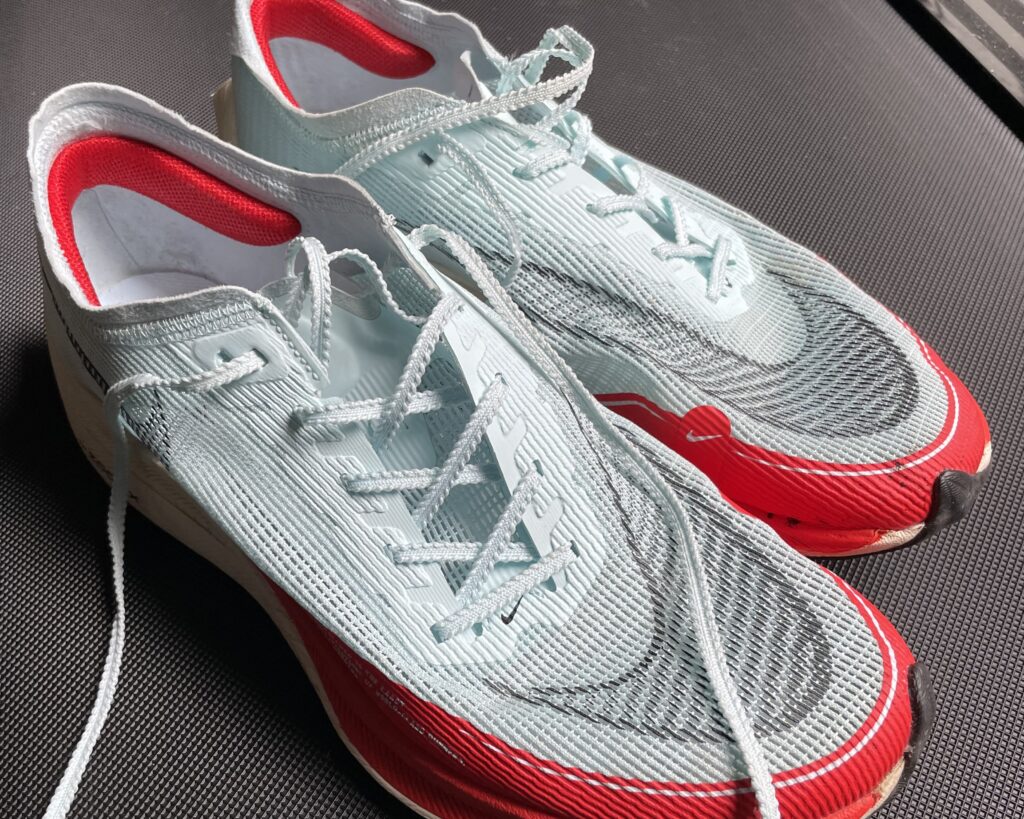
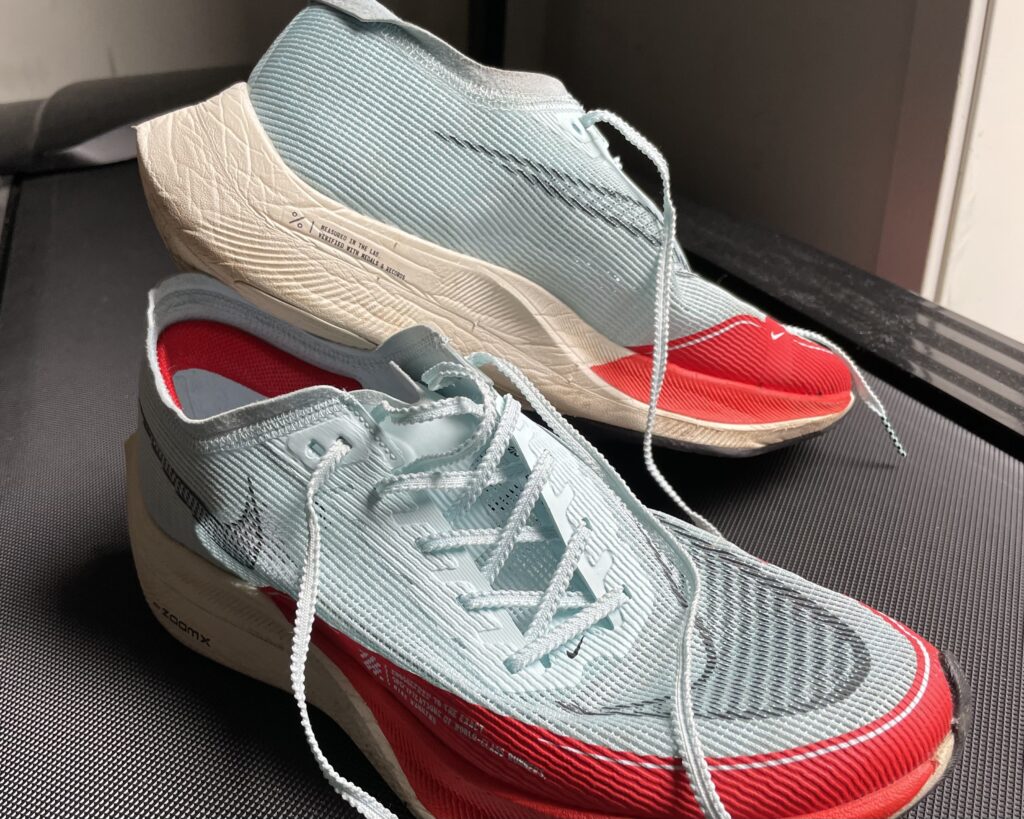
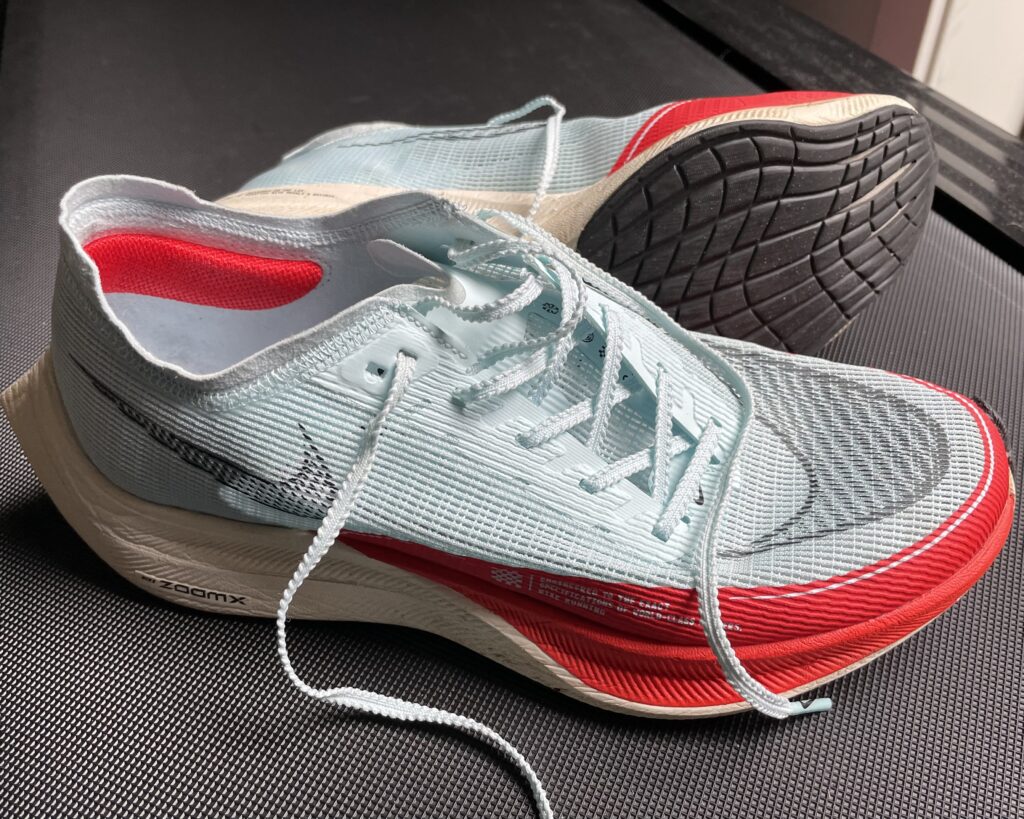
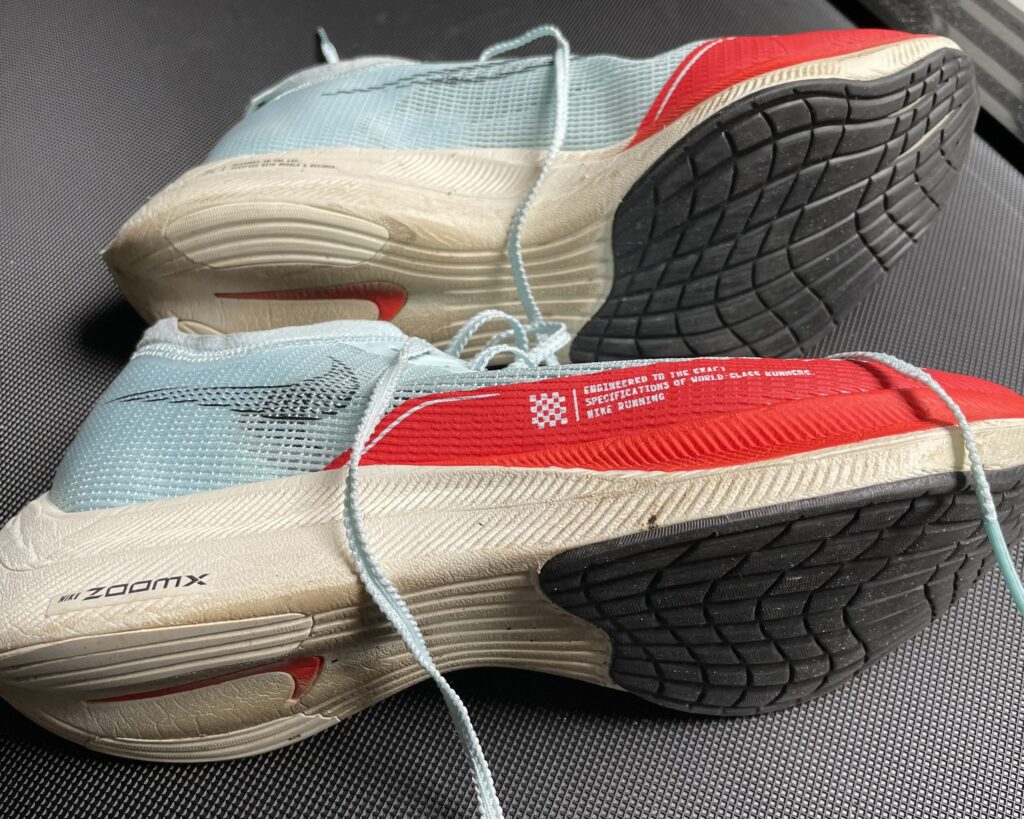
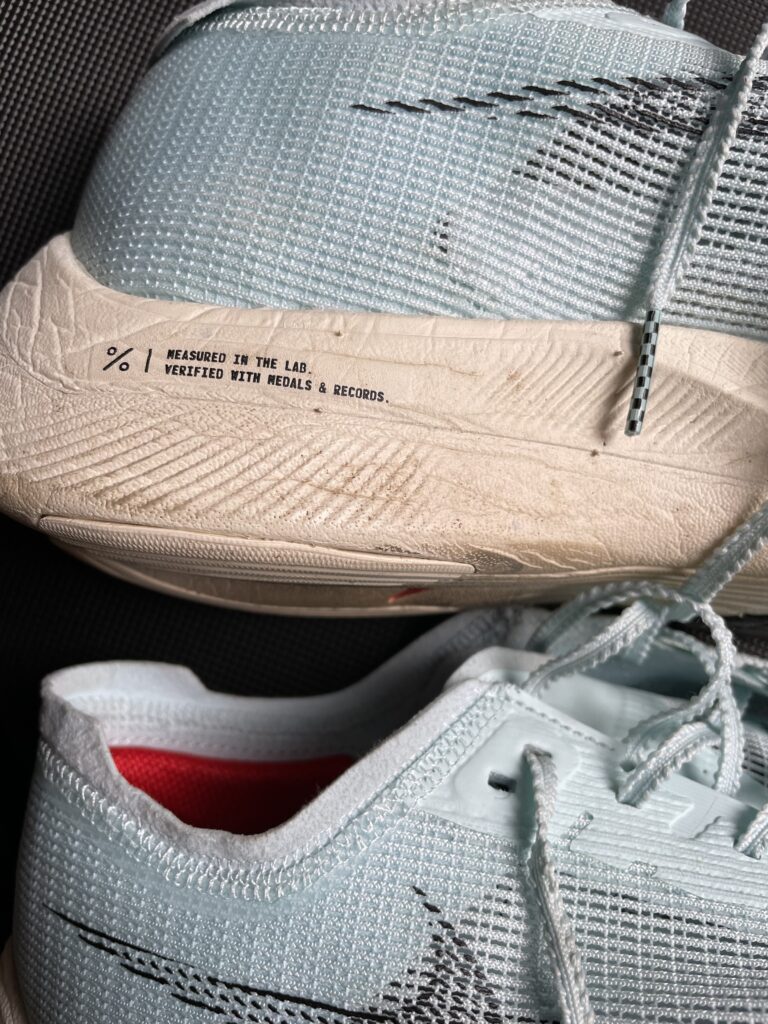
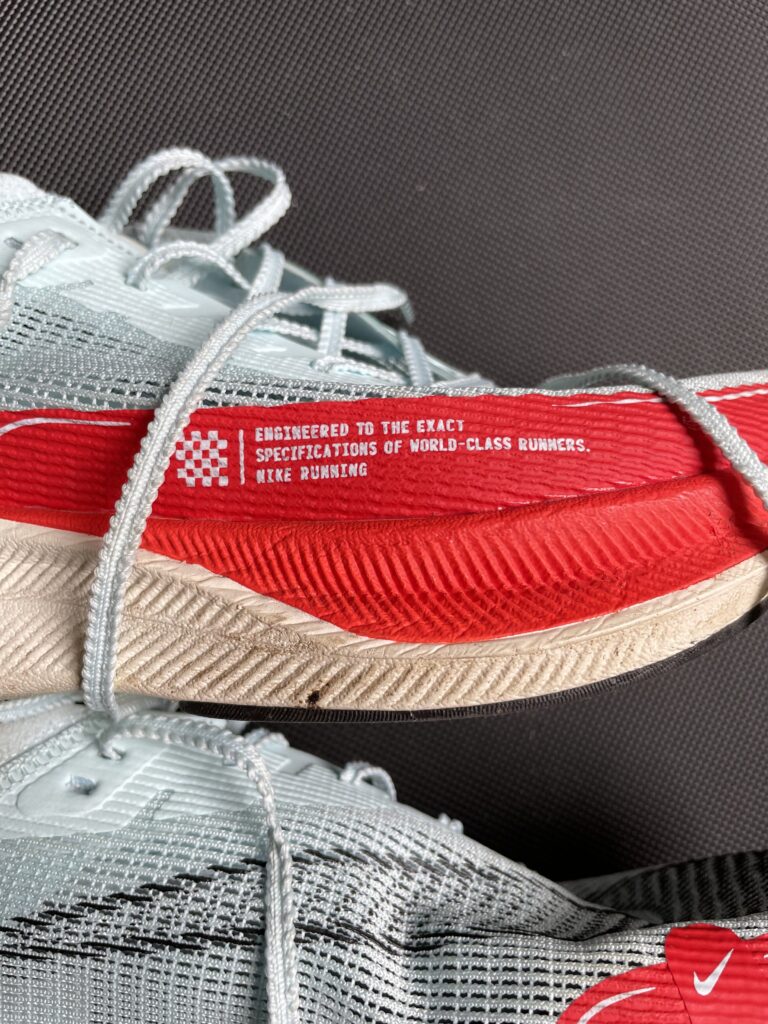
This is an homage to the original colourway of the very first Vaporfly 4%. Compared to the first Next%, the only change was a modified upper. Made in a coarse, knit material, it was not my favourite. But the added padding on the tongue for better stability addressed a common complaint directed towards its predecessor.
But did the composition of the foam change? I tested the Next% 2 to both of my pairs of the original Next%, and my impression was clear: Despite logging a couple hundred kilometres in them, both pairs of the original Next% felt softer and more forgiving than my brand new pair of Next% 2.
The Future of the Vaporfly
The Nike Vaporfly has left an indelible mark on the world of distance running. It revolutionised the sport and sparking a global debate about the role of technology in competition. Its journey from the ambitious beginnings of Project Breaking2 to the dizzying heights of world-record performances has been nothing short of remarkable.
Whether or not Nike has tweaked the composition of the foam with its latest version, for higher production capacity or better profit margins, one truth remains: the Vaporfly’s legacy as a game-changing innovation will endure, inspiring athletes and designers alike to push the boundaries of what is possible in the pursuit of human achievement.
But as competitors have caught up, the running shoe market is filled with worthy alternatives from a range of competing brands. Does this mean Nike will kick it up yet another notch with the Vaporfly Next% 3? With it hitting the streets these days, we’ll find out sooner rather than later.
Time will tell. Want to be sure not to miss out on my impressions in the upcoming full review of the shoe? Sign up for the newsletter below.
Like this?
Let me know by sending me an email at lc@run161.com.
